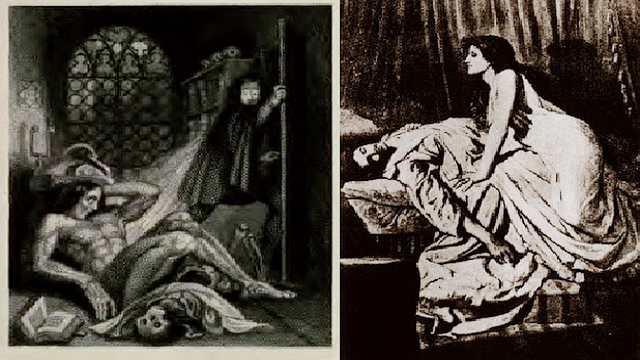Unearth the hidden history of Lord Byron’s haunted summer in 1816, where ghost stories led to the creation of the first vampire novel, ‘The Vampyre.’ Dive into the mystery behind Dr. John Polidori’s life and tragic end.
Table of contents
- Dark Secrets of Lord Byron’s Inner Circle: The Untold Story Behind the Birth of the Vampire Legend!
- The Haunted Summer of 1816
- Lord Byron’s Inner Circle
- The Genesis of ‘The Vampyre’
- Vampire Revolution in Literature
- Tragic Demise of John Polidori
- Legacy of ‘The Vampyre’
- The Enigmatic End
- Conclusion: Unveiling Shadows of the Past
Dark Secrets of Lord Byron’s Inner Circle: The Untold Story Behind the Birth of the Vampire Legend!

In the shadowy realms of Lord Byron’s entourage during the haunting summer of 1816, a tale unfolded that birthed the first romantic vampire novel, ‘The Vampyre.’ Dr. John Polidori, a key figure in this macabre narrative, played a pivotal role in shaping the vampire folklore that continues to captivate us today. Join us as we unravel the cryptic story behind Lord Byron, Polidori, and the creation of a literary legend that transcends time.
The Haunted Summer of 1816
Amidst the political turmoil of Italian unification, many patriots sought asylum, with England becoming a refuge. Gabriele Rossetti, an émigré, settled in London in 1824, later becoming the father of four children, including Dante Gabriel Rossetti, a renowned poet and painter.
Lord Byron’s Inner Circle
Frances Polidori, sister of John Polidori, married Gabriele Rossetti. John Polidori, educated at Ampleforth and a physician to Lord Byron, took a crucial role during their European travels. The fateful summer of 1816 found them at Villa Diodati, where eerie stories and readings fueled the birth of the vampire myth.

The Genesis of ‘The Vampyre’
On June 17th, 1816, Byron proposed a ghost story competition. Polidori began crafting his tale, inspired by Byron’s suggestion. The result was ‘The Vampyre,’ published in 1819 without Polidori’s consent but attributed to Byron. The story featured Lord Ruthven, a thinly-veiled portrayal of Byron.
Vampire Revolution in Literature
‘The Vampyre’ ignited a vampire craze. Operas, stories by Tolstoy, Gogol, and Dumas, and Kipling’s poem ‘The Vampire’ followed. Bram Stoker’s ‘Dracula’ in 1897 drew inspiration from Polidori’s tale, solidifying the vampire’s enduring presence in literature and popular culture.
Tragic Demise of John Polidori
Following the rift with Byron, Polidori’s health declined. Struggling with depression and gambling, he tragically consumed prussic acid on August 24th, 1821, leaving behind a legacy entwined with the creation of the vampire myth.
Legacy of ‘The Vampyre’
Polidori’s tale, despite the controversy surrounding its publication, set the stage for the enduring allure of vampires. From Buffy to Twilight, vampire-themed works continue to capture imaginations, ensuring that the legend lives on.
The Enigmatic End
The circumstances of Polidori’s death remain shrouded in mystery. Though it is known he took prussic acid, the coroner’s jury returned a verdict of “died by the visitation of God.” An ironic end for a man who once condemned suicide in his writings.
Conclusion: Unveiling Shadows of the Past
The story of Lord Byron’s inner circle and the creation of ‘The Vampyre’ unveils a fascinating chapter in literary history. Dr. John Polidori, though overshadowed by controversy and tragedy, played a pivotal role in birthing the vampire myth that continues to thrive in modern storytelling.
As we explore the haunted summer of 1816, we peer into the shadows where ghost stories took a life of their own. Lord Byron, John Polidori, and their companions wove tales that transcended the Villa Diodati, leaving an indelible mark on literature. The vampire, born from that stormy summer night, continues to cast its mesmerizing spell on readers and viewers alike. Join us on this journey through time, where reality and myth intertwine, and uncover the enigmatic legacy of Lord Byron’s haunted inner circle.

